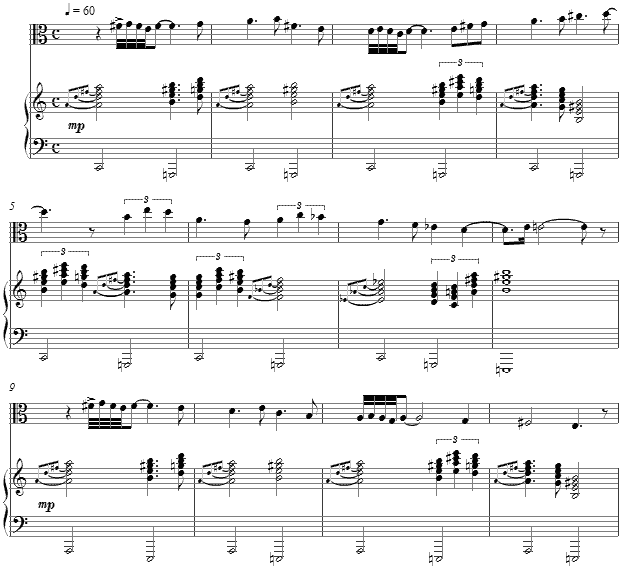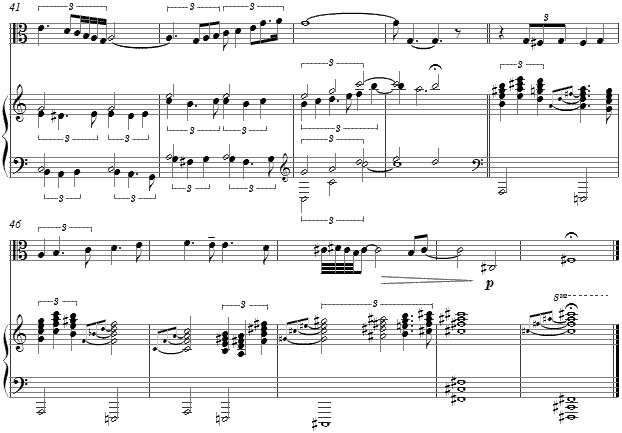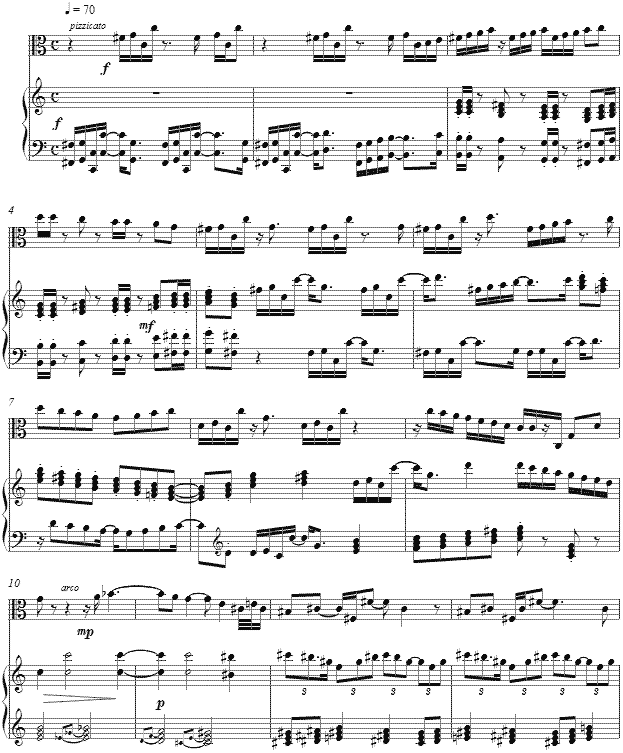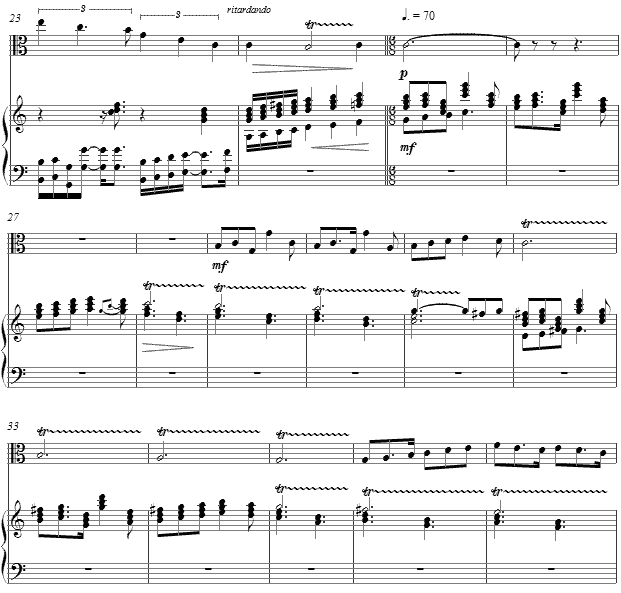Music and Texts of GARY BACHLUND
Vocal Music | Piano | Organ | Chamber Music | Orchestral | Articles and Commentary | Poems and Stories | Miscellany | FAQs
Sonatina for Viola and Piano - (2009)
for Elaine Fine
i. Giocoso - [ 5 pages, circa 2' 40" ]
Composer and violist, Elaine Fine, offers many of her scores online as free downloads, and writes a blog on issues surrounding music as well. We had corresponded about some texts and song settings, and as I came to think about broadening the chamber music within my portfolio, the notion of a Sonatina for viola came to mind alongside my reading of her blogs.
The Sonatina is in three sections, the first being something of a standard sonata-allegro form, the motive for the entire work being various functions of the raised fourth within the C major scale, which of course yields a mode, but actually more than one single mode. The inclusion implies the dominant but also the relation of the half-step lower neighbor to varying tonalities as well. After a short introduction, the first theme of the form is announced by the viola at measure eight. Following exchanges between instruments it is inverted, used in conjunction with a second motive and alternate texture to the linear writing, and served up in various guises.
ii. Andante cantabile - [ 3 pages, circa 3' 25" ]
The second movement relies on the same structural foundation, as the raised fourth now appears within polytonal harmonies, as the viola "sings" its cantabile over the various wide ranging progressions of parallel triadic harmony.
The second movement's reliance on this structural beginning allows a settling on F sharp several times in the movement including the final cadence which leads then to the final movement's treatment of this raised fourth, now so much more than a simple alteration of a major scale.
iii. Contrappunto e fuga - [ 6 pages, circa 3' 30" ]
The contrapuntal opening features an exchange between the octaves of the piano and the pizzicato of the viola as its answer and "foil." By measure five the viola leads in this game as the piano answers in its response. Thereafter the tonic note becomes the leading tone to regional alterations, beginning with the subject in light development in C sharp major and then beyond.
The contrapuntal section yields to a more formal fugue as the 6/8 meter change. The fugue subject is begun in parallel triads as was the initial harmonic vocabulary for the second movement. The subject is announced in its own accompaniment in the piano, and thereafter restated in the viola before the formal answer in the dominant at measure 32 and beyond. The remainder of the fugue includes a touch of a mensural canon as well as a number of varied tonal domains rushing forward to the final statements and recapitulation.
[ Total duration - 14 pages, circa 9' 35" ]
Elaine Fine
From Ms. Fine's blog, she writes of herself: "I am active as a composer, a violist, a violinist, a recorder player, a CD reviewer, and as a teacher. I began my professional musical life as a flutist, and spent a lot of quality time as a baroque flutist, but both of those instruments spend their time tucked away in a drawer, while my violin and viola are often tucked under my chin." http://musicalassumptions.blogspot.com/
The score for Sonatina for Viola and Piano is available as a free PDF download, though any major commercial performance or recording of the work is prohibited without prior arrangement with the composer. Click on the graphic below for this piano-vocal score.





